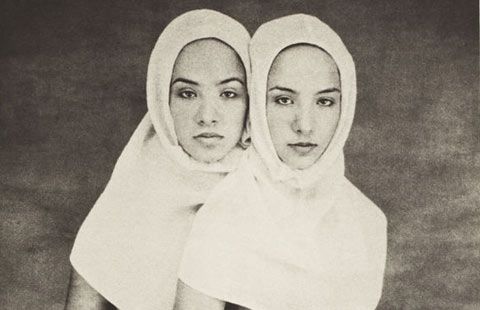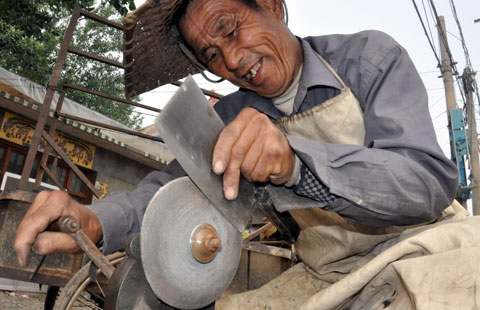The ancient army that's still growing
By Zhao Xu and Lu Hongyan ( China Daily ) Updated: 2014-10-22 07:48:30
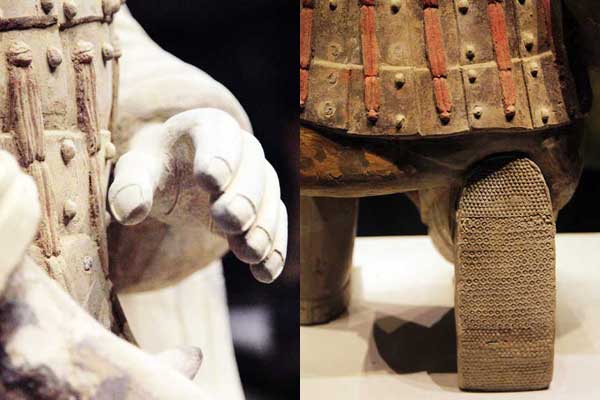 |
|
For an observant's eye, details abound: the diligently carved fingernail of a soldier and the bottom of his shoe. [Photo by Fan Zhen/China Daily] |
Unique details
The craftsmen who made the warriors are believed to have modeled the figures on one another, to ensure uniqueness. The details even extend to the locks of hair, fingernails, palm lines, and the soles of their sandals, whose dimpled patterns appear remarkable similar to those seen on the soles of modern sneakers.
Rather than displaying a ferocious streak, collectively the soldiers appear to be in a trance, the contemplative ecstasy in which a conquering army finds itself on the eve of a decisive battle.
From a warrior's flared nostrils and tightened lips, to a horse's raised ears and wind-parted mane, everything points to an impending fate.
Today, the scene is nothing like it was in the first few years of research that followed that 1974 spring. "One discovery led to another. We felt both thrilled and ill prepared," said Yuan Zhongyi, the leader of the site's first archaeological team, comprising 10 members, who is known as "the father of the Terracotta Warriors".
"The construction of the giant roof, which today houses the entire Pit 1, was undertaken between 1976 and 1979, the year the museum officially opened to the public," the 82-year-old recalled. "Before the roof, we lived on the site in tents and conducted our excavation work in the open. I remember being woken at midnight by lashing rain, and running outside and calling out to everybody. Using plastic sheets and straw mats, we launched a desperate attempt to rescue our silent friends.
"Thanks to those days, I never forget to check the weather," he said.
For Zhou Tie, the museum's lead conservationist, other challenges proved far more daunting. "If you can believe it, the monochrome army we see today was swathed in vibrant hues when the soldiers were first born," he said. "Colors extracted mostly from natural materials, including semiprecious stones and animal bones, were applied over a layer of lacquer that coated the pottery figures."
|
|
|
|
|
|
|
|

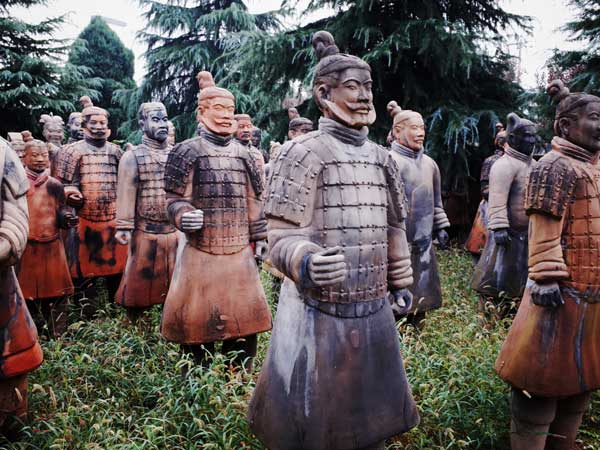
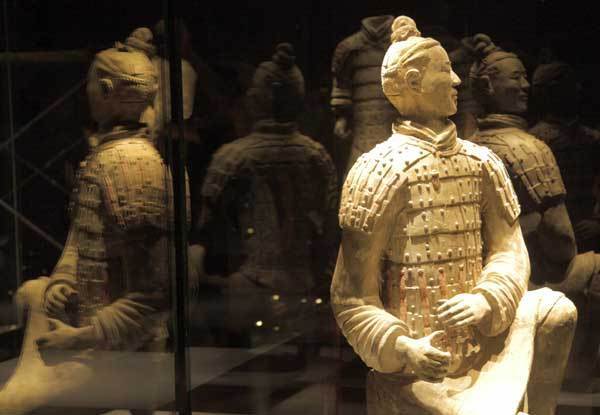
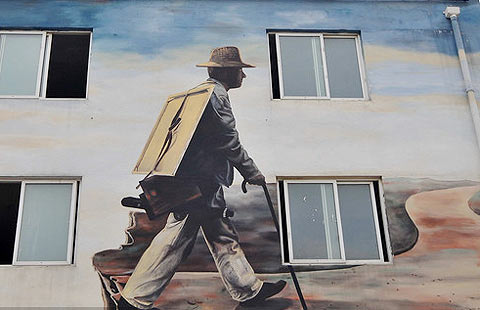



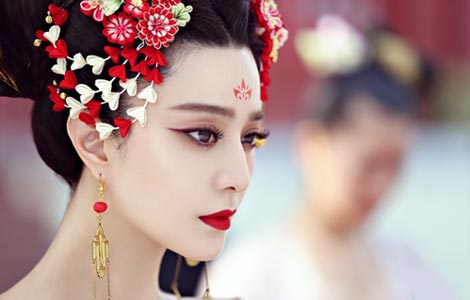
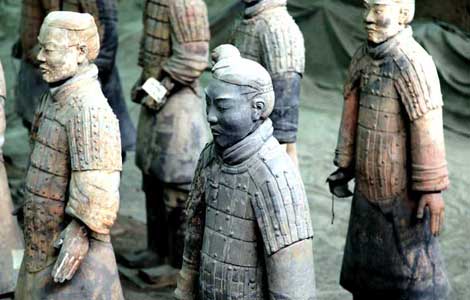





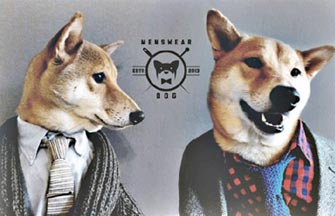

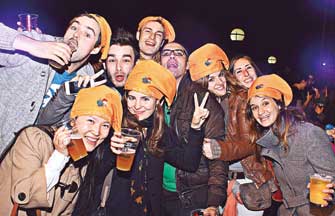


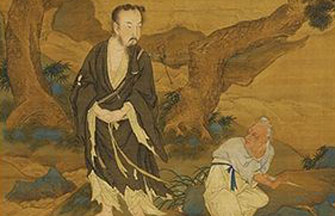


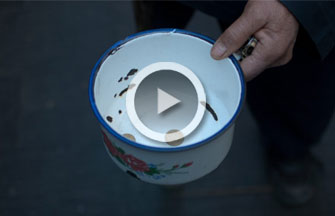

 Raymond Zhou:
Raymond Zhou: Pauline D Loh:
Pauline D Loh: Hot Pot
Hot Pot Eco China
Eco China China Dream
China Dream China Face
China Face



